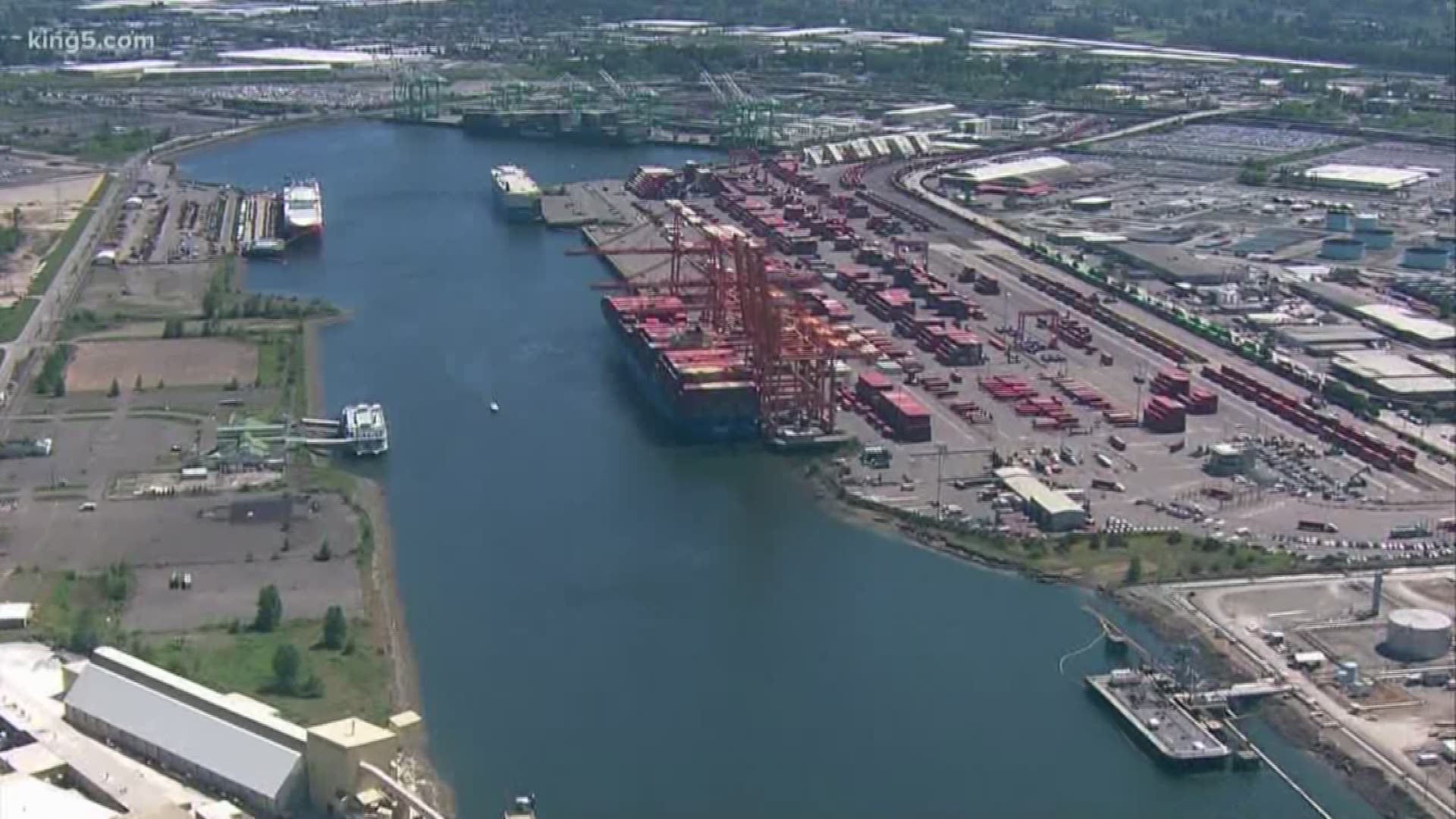SEATTLE — The good news is that Washington's economy is growing. With more people and business, however, the state has also seen an increase in greenhouse gas (GHG) emissions despite predictions otherwise and policy aimed at reductions.
"We are doing the right things in the state. We have adopted some really aggressive policy to reduce carbon emissions. Those are beginning to take effect. We're seeing that in the numbers. Our economy is growing by leaps and bounds, but our greenhouse gas emissions, they are just kind of ticking up," said Andrew Wineke with the Washington Department of Ecology's Air Quality Program.
Their most recent data is from 2016, which is still under review and could change. It shows about a 2% increase over 2015.
It's still lower than 2008, which was followed by a decline for several years due to the recession. Around 2012, GHG emissions start to increase again, and have done so steadily at a rate of about 2-3% each year.
"There is more work to be done, but I think we should focus on the fact that we are doing some good things in the state. We are making progress. We just need to turn that corner," Wineke said.
But if you ask Washington Policy Center Environmental Director Todd Myers, it looks more like hitting a wall.
"If you are not getting data until 2-and-a-half years later, you don't know what is working and what is not," Myers said.
Though the state says it simply takes time to accurately compile data from multiple sources, Myers argues the system moves too slowly to make good predictions or good policy.
"They are making policies based on numbers that they claim will be true 15 years from now. It doesn't make any sense for politicians to take the word of an agency that can't even tell you what happened two-and-a-half years ago that is trying to predict 20 years in the future," Myers said. "We are wasting huge amounts of money. That is not just a waste of taxpayer dollars. It is a waste of opportunity to do good for the environment. If people really believe that we are facing a climate crisis, we should make every dollar work. Instead, we are spending $20 to get one dollar worth of environmental benefit."
For Myers, the solution should be more investment in technology and open market solutions rather than regulations and taxes.
"We need to be encouraging more innovation, more people to find ways to reduce CO2 for very low cost. That is how we're going to save the environment. That is how we are going to reduce CO2 the most rapidly," Myers said.
In 2008, the state set targets to reduce emissions to levels seen in 1990 by 2020 and 25% below that by 2035. The most recent legislative session set a plan to be off coal by 2025, to be carbon neutral by 2030, and carbon free by 2040.
Transportation is Washington's greatest source of GHG emissions.
Wineke believes the state is moving in the right direction but just needs more time to see the results.
"Some of the new laws and new programs we've put in place this legislative session are designed to do that, help us get there, but we need to do more, clearly. We need to move faster on this," he said. "It is starting to turn a corner where our economy is growing faster than our greenhouse gas emissions are, but what we really need to do is go around the corner and be able to reduce greenhouse gas emissions while still growing our economy."

